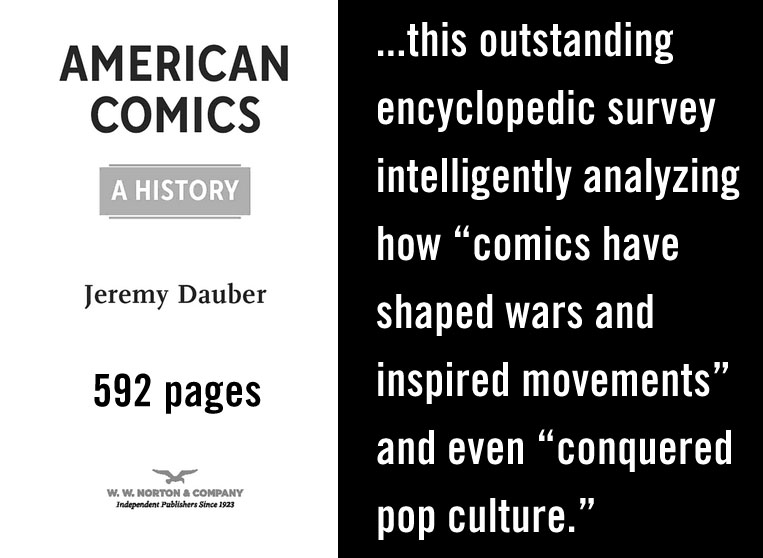Review: Weird Mystery #4
"To Live Forever"
Weird Mystery #4, Jan-Feb 1973
"To Live Forever" written by Steve Skeates with art by Romy Gamboa and Rico Rival, 9 pages long, final story of the issue.
Skeate's story starts off with the Weird Mystery series host Destiny (who only appeared in issues #1 to #14), wearing a purple cloak and carrying a heavy tome handcuffed to his right hand reminescent of the gov't employee who has America's nuclear secret launch codes chained to him while traveling with the President of the United States.
Destiny is here to guide us through the issue's stories, and he begins by providing a quotation from Horace the ancient Roman poet:
What next morn's sun may bring,
Forbear to ask:
But count each day that comes by gift of chance so much to the good
But Skeates' story isn't going to be about having Roman good luck to see the next morning, and appreciating it, but about contriving an escape from the world as it is, using machines, lies, and plain old sleep.
We see a "self-proclaimed somewhat senile scientist" conducting experiments within a castle, which unfortunately the artists Gamboa and Rival don't really establish for us with even one exterior view to show us the location of our tale, instead we see only interior stone-walls, a rough approximation of a laboratory, and a twisting turret staircase that indicates our environment to be one typical of old Hollywood films featuring mad scientists.
We see a laboratory where a scientist has a young nude man (sound effects and viewing perspective help to keep this issue within the Comics Code Authority limitations) awaiting the twist of a dial and punch of a button that will release a ray that "will give you eternal life" says the balding but long-haired scientist, "or it will have absolutely no effect on you whatsoever!"
In the thought balloon before the ray is unleashed, we see that the scientist reminds himself that "I lied when I told him there'd be no danger!" The scientist then hits the activating button with a "click" sound effect, and the "human guinea pig" is immediately vaporized into "useless atoms" by the ray. The puzzled scientist looks at the circle of remains left on the floor of the lab and dismisses the fatal result because he knows the victim is "in no position now to take me to task" for lying about the real risks involved in this experiment in immortality. How did the young man come to be here (and why is he nude?), no explanation is given, and like the missing exterior view of our location, we will not be given much in the nine pages of "To Live Forever" to account for what's happening.

After this disaster in the lab, as the text narration informs us, the scientist does not notice a whispy stream of light-blue smoke that rises up from the purple, fiery remains of the dead blonde man and "shimmer momentarily in the slight breeze that easily passes through the old stone walls" then "enter a rift in our existence." This is depicted as a pale yellow round circle suspended in the air. Why is this circle there? Because it matches the circle that are the burned remains of the young man on the floor? How did this circle come about to float in midair? Nothing is stated that it is the result of the scientist's equipment unintentionally producing an alternative effect, but in a total absence of information, that seems to be the only explanation.
The uncaring scientist muses about how close he thinks he is to "finding the way to immortality," a task that takes on a stronger meaning when he also muses that his young wife is only waiting for him to die so that she can inherit his wealth. He then thought-balloons "where is she, anyway?"
Then we meet the young wife. She is floating in a "world of dreams," a phantom like girl with blue skin wreathed in a blue nightgrown, her body twisting and turning as she seems to fly in a phantasy "enjoying the freedom of blissful flight" like a customer in an opium den, but is rudely interrupted by the Old Scientist who says "I didn't take you as my bride just so you could spend your whole life sleeping!"
Now that he's got her awake, she is ordered into the kitchen to make dinner. She then tells herself "is it any wonder I prefer my dreams over reality... What with a husband like that? If only my father hadn't owed him so much money!" She then mentions one by one her complaints about her situation, but comforts herself by reminding herself of all the money she'll inherit once the old man is dead.
That night she returns to her world of blue-skinned dreams, floating in her nightgown again, where she encounters the floating whisp of a young man, and the narrator tells us "perhaps this young man is simply a product of her own mind, of her subconscious wish to love and be loved."
Night after night she returns to meet with her dreamlike friend, and so the two are soon telling one another that they love the other, though the young women also tells herself "this isn't really happening! It's only a dream!" Despite this, she is soon saying that the dreamworld is her real home, that it is as real "as that other" existence where she cooks dinner and waits on her husband to die.
The Narrator tells us that she spends more and more of her time sleeping through the days, but when she is awake bent over a sink in the kitchen with her ornery old scientist husband watching (and why is he so miserable? Why are there so many dishes to wash? Skeates' story doesn't tell us) she is happily singing to herself, and this activity makes the old gentlemen very suspicious. His only conclusion is that she must've taken up with a younger man, and he then tells himself in a different panel that "she won't get away with this" while he is holding a gun.
He follows her and sees her sneaking into his lab, wondering if this is where she is making a secret rendezvous with a lover, but her thought balloons only reveal she has entered his workspace out of curiosity at all the buttons and gadgets. Enraged, his jealousy forgotten, the Old Scientist shoots at her, frightened that "she could destroy all my years of work!"
He misses, but this causes her elbow to jerk around and hit the button that launches the ray that he intended to bring immortality to the dead youth at the beginning of our story, but this time it zaps the old scientist instead, reducing him into a purple-colored pool of fiery debris on the floor just like what happened to his earlier victim. The young women flees the lab, unsure about what happened to her vanished husband, telling herself "I have no idea how it happened! But that hardly matters! What's important is that I'm free!"
But behind her in the lab is that familiar whispy-blue smoke above the circular, fiery ash heap, rising up and vanishing into a simple drawn circle "a rift in our plane of existence" the narrator tells us again.
Then is quoted a line from the 1958 "The Fable of the Final Hour" by Beat poet Dan Propper,
"In the 34th minute of the final hour, the law of inverse enclosure was rediscovered and a matchbox was declared the prison of the universe..."
The young wife has fled to her couch, trying to fall asleep so that she can reach her dream-boyfriend and "tell him of my freedom!" And also, importantly, that she now gets all of the dead husband's money (how exactly that is a currency usable in their dreamworld isn't explained.)
But then we see the Old Scientist again, now also a blue-form, floating into the dreamworld meeting of the young couple, brandishing his gun. He takes a shot and announces "so you're the one who's been trying to steal my wife from me. For that you're going to die!" Which raises another question, how do you kill a phantom with a gun who you've already killed with lab equipment?
The Old Scientist then says that first, the young man gets to watch him deal with his unfaithful wife, but before he can fire, the young man crosses a distance of what looks like about twenty-five feet in a flash and karate-chops the pistol from the old man's hand. He then angrily accuses the old man of tricking him and then leaving him to an existence where his only company is a "shallow, greedy woman." Then all three join into swirling combat, drawn by the artists as a twisting mass of the three spinning around as the hand gun looks to be floating away, the young woman shouting "you lied to me! You said you loved me!"
We exit the world of the blue-people and the narrator tells us "in the real world, a young woman tosses and turns in her nightmare!" We see her upon the couch, dressed in red, with her hands around her own neck, writhing.
Destiny, the narrator, then stares out at us, saying "but will she escape? If she is shot in this dream, will her death extend to the real world as well? Or... Or... What? The End."
The muddled ending and the clueless narrator doesn't make a lot of sense. Has the lab equipment created an "afterlife" and then sent the two male victims into it, but how is it that the young woman can access this simply by sleeping? Is it because she is contaminated by simply being in proximity to the lab where this strange power is being used? These are guesses and your reviewer trying to make order out of what is otherwise a patchwork of stereotypes, cliche's and unexplainable story twists.
With just the nine pages to get the story across, the artists emphasize the mostly wordless physicality of the beautiful floating woman who is wearing only a nightgown instead of establishing for the readers a few concrete certainties about whether we're inside a castle, a big house, an enormous condo, or who knows what. What's the scale of this "immortality machine" the scientist has built, and most importantly, what all this floating, dreaming and ordering the only woman in the cast to make dinner has to do with the twin goals inside the tale of achieving immortality and grabbing onto some cash. Is the tale sort've equivocating the two? It doesn't biologically make any sense unless this is a perverse rendering of the Biblical wisdom to "store up your treasures in heaven where neither rust nor thieves can steal it," but since Skeates' started off with Horace the Roman, this is unlikely. The Romans needed funds in the afterlife to pay for passage on the River Styx, the toll to reach the underworld, and in a way this matches our story in "To Live Forever," except this comic book dream-world-afterlife is more American than Roman since you can go there and carry a gun. On the other hand, Skeates quotes the poet Propper about the universe fitting into a matchbox, but if you read the poem elsewhere it continues and states the matchbox prison is ruled over by two fleas who are the wardens, which of course has nothing to do with our story.
Either way, we're left with questions. Why is the old scientist so grumpy? How crazy is he? Why is the young man naked throughout? Forget the money and the gun going into the dream-afterlife, how about just a pair of skivvies? And lastly, why is the young woman strangling herself at the end while the Narrator Destiny is concerned about whether getting shot in a dream translates to a bullet hole in the real world (is it because if that is how things work, does he need to be engarde for floating phantoms carrying guns? Is this how Destiny abruptly disappeared and was replaced by the old woman Eve as narrator in issue #15 of Weird Mystery Tales?)
The simplest explanation for the whole tale could have been, with just a few tweaks, that the young woman was inducing a pleasant but then lethal dreamworld through the use of powerful drugs in a bid to escape her miserable husband, ultimately leading to an ironic form of suicide at the end. This wouldn't explain the "immortality machine" except as a device built by a madman that kills anyone who gets involved in the crazed experiments using it which can produce nothing more than a pile of ashes on the floor.
But the connecting pieces to form this randomly constructed understanding of "To Live Forever" isn't present in the tale and we must accept, apparently, that the story is sloppily written and badly presented by the artists who get caught up in drawing the beautiful girl too much (they do it quite well) and not drawing enough establishing background scenery.
Maybe the image at the end of the girl with her hands around her throat was too much for the Comics Code to stand, and so the narrator Destiny speculating about dying/not dying in a dream is as far as the story can go in making sure all three characters are dead by the end. All of that is speculation. The final verdict is that "To Live Forever" is decidedly mortal.
Related: More Reviews!
Review: Harley Quinn vs Zatanna #1 – Fighting in a void
Review: Conan the Barbarian #186 – Conan and a water nymph cooperate on a jailbreak
Batman Family #1, Sept-October 1975 – Batgirl and Robin battle a resurrected Benedict Arnold out to spoil the Bicentennial
Detective Comics #831 - Reforming Harley Quinn June 2007
Brave and the Bold #131, DC Comics December 1976 by Bob Haney with art by Jim Aparo
Review Adventure Comics #423, featuring Supergirl DC Comics Sept 1972
Review: Knight Terrors First Blood #1 DC Comics July 2023
Hell is a Squared Circle by Chris Condon and Francesco Biagini September 2022 AfterShock Comics
Review: Weird Mystery #4, Jan-Feb 1973
The Secret Life of Catwoman, Batman #62, Dec 1950–Jan 1951
The Origin of the Superman-Batman Team - review of World's Finest #94, May-June 1958, art by Dick Sprang
The Spirit Reborn - Review of The Spirit #1, Feb 2007 By Darwyn Cooke
Superman Confidential #1, January 2007 By Darwyn Cooke and Tim Sale
Richard Corben's Edgar Allan Poe – Poe's Haunt of Horror #1, 2006
Bloodstar - 1975 - Richard Corben
House on the Borderland 2000 - by Richard Corben
Review of the Joker Graphic Novel - Brian Azzarello and Lee Bermejo 2003
Review Harley Quinn #55, Feb 2019 - "We'll All Be Home for Christmas"
Edgar Allen Poe Haunt of Horror #1 2006 - by Richard Corben

Comic Books the Dilemma
Original page February 21, 2023 | Updated December 8, 2023



